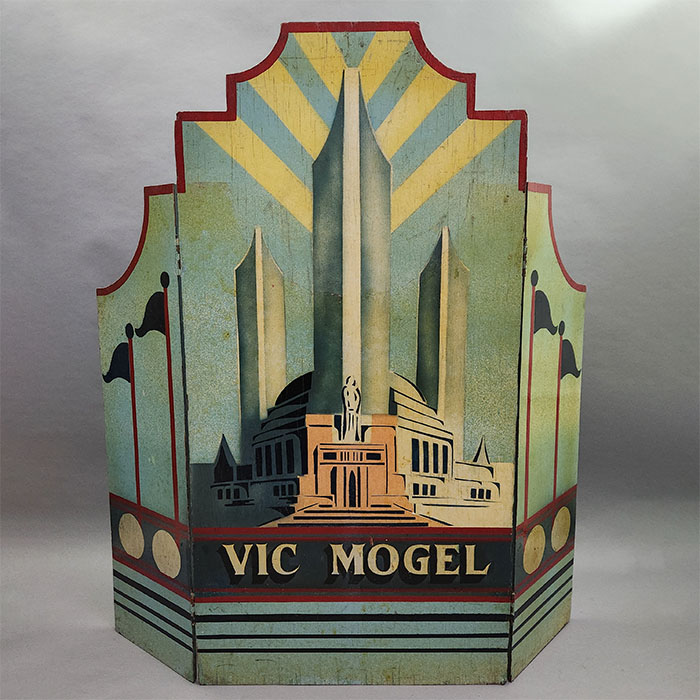Description
Music stands like these were commonly used in the Big Band Era from about 1935 to 1946 when jazz music with large ensembles were the center of popular music in the United States. The stands were used to hold scores of music as well as instruments, and to provide a neater stage look when the musicians were seated behind them. They were typically made of wood and designed to be sturdy, but foldable for easy transport for touring bands. Generally, they were custom made and often featured the logo of the band on the front panel serving a dual purpose of advertising and stage decoration. The design was often simple, with Art Deco inspired elements.
The “Federal Building” at the 1933 Chicago World’s Fair featured three distinctive fluted towers, each about 150 feet tall, symbolizing the three branches of the U.S. government: judicial, legislative, and executive. The towers were designed to be visually prominent, rising above the lower, sprawling structures of the Fair’s complex, including the nearby Hall of States. The Federal Building was topped by a large dome, which provided a central point of focus for the structure. It served as a showcase for exhibits from U.S. government agencies. The building was in the Art Deco/Art Moderne taste of the fair, but the fluted towers and dome also reflected classical elements. This latter aspect of architectural design had been a hallmark of the earlier, more traditional Beaux-Arts style of the 1893 Chicago World’s Fair.
Condition: Generally very good, with the usual overall wear and handling. Varnish layer slightly yellowed. Some professional restorations to abrasions to paint. Retains fragments of metal hardware on the backside, perhaps formerly holding an easel for sheet music.






